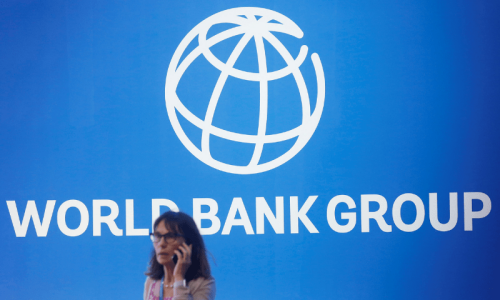CONCERNS are increasing among some sections of the business community that the large amounts of foreign investment flowing into local currency government debt securities could tie the State Bank into high interest rates for a longer period, because if rates were to be reduced, this money would run for the exit. Additionally, the foreign investors parking their funds in Pakistan government treasury bills are betting that for the duration that their money is there, an exchange rate depreciation will not take place. Exchange rate movement is one of the key risks faced by all foreign investors, whether in financial instruments or fixed investment, and given the sum of $2.225bn that has come into treasury bills this fiscal year, exchange rate depreciation would wipe out a significant chunk of the profits that have been made.
For the most part, these fears are overstated. This is the first time Pakistan’s local currency debt instruments have seen such large foreign participation and the phenomenon is new to most people. As a result, some misunderstandings have also been created. For one, some erroneously believe that foreign investors are getting a return of more than 13pc on their dollar-based investment. The truth is that this is the rupee-based return since the investment is in rupee-based instruments. The dollar equivalent would be much lower. More importantly, others have warned about the danger of ‘hot money’ being fickle and tied to small movements in interest rates. This is a more important concern to bear in mind, especially given that at least some of these inflows are from what the financial services industry calls ‘carry traders’, meaning investors who borrow in one country where interest rates are lower and lend to another where the rates are higher, earning themselves a tight spread in between.
The problem for the State Bank now is the perceptions that are coming up around these inflows. The market is expecting an interest cut between now and March. The banks seem to have other ideas though. The last T-bill auction saw massive participation of more than Rs1.1tr in bids when the target was Rs400bn. However, more than 60pc of all bids were in three-month tenors, meaning the banks are not pricing in an expectation of rate cuts in the few months ahead. Now if the State Bank does not cut rates by March, it could face a mounting chorus of voices saying that the country’s monetary policy has been mortgaged to foreign investors in the government’s hasty search for foreign exchange. This will become more problematic if in the months ahead there is growing recourse to this form of borrowing, which is a possibility. If this trend gathers pace, it could eventually serve as a drag on the economy. Perhaps both the pessimism and optimism around this phenomenon should be curtailed at this point.
Published in Dawn, January 19th, 2020









































